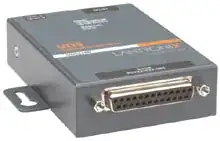I have a hardware device I need a server to dial into at regular intervals. The problem is I no longer have a POTS line or a modem in any of development computers, and all my production servers are virtual. I went out and got a usb modem for development and will plug it into a broadvoice VOIP line, but this seems quite kludgey. I've googled around and have found "virtual modems" that simulate serial connections or "at based" modems over IP, but so far nothing supports SIP or any kind of VOIP.
Is there a way to connect a virtual modem to a real one?
Thanks.
Update Putting a computer near the device isn't a good option as its in a public basement, (though the ALIX boards might work) and even then I'd have to dial into it. I also can't replace the modem with a serial device or an ip device as the only connection to location is the phone line and I don't know enough about the device to modify it. This is for some old smart meter equipment.
